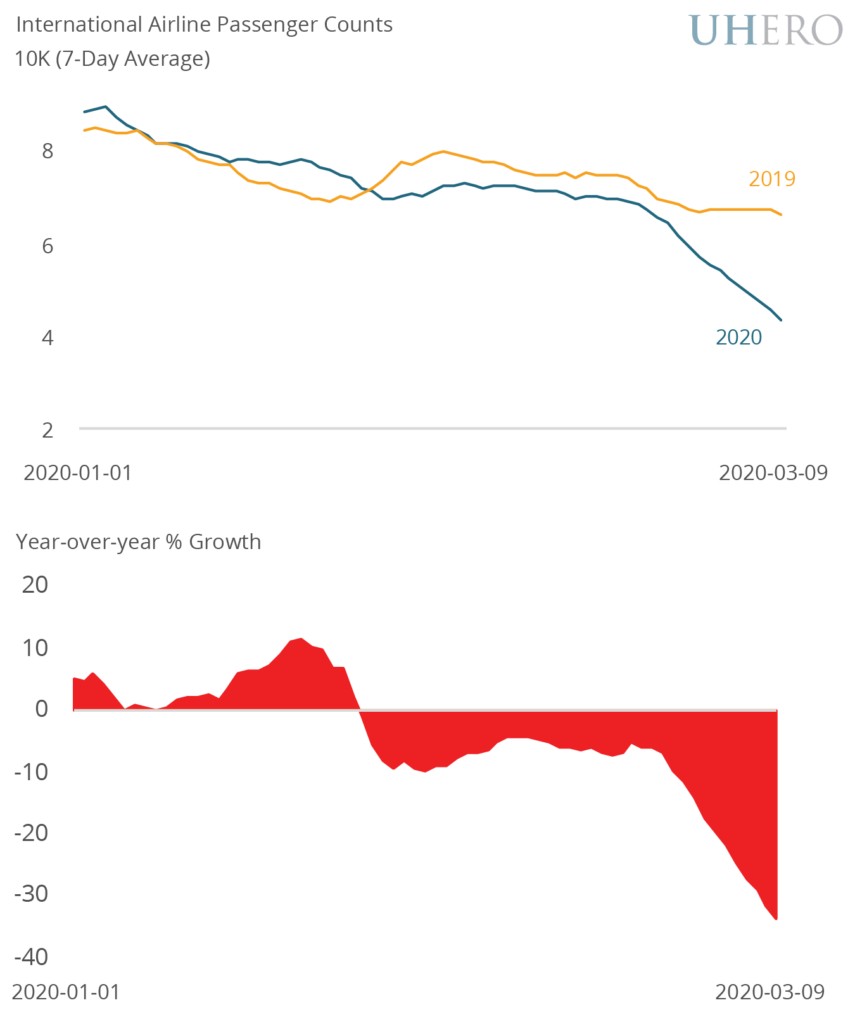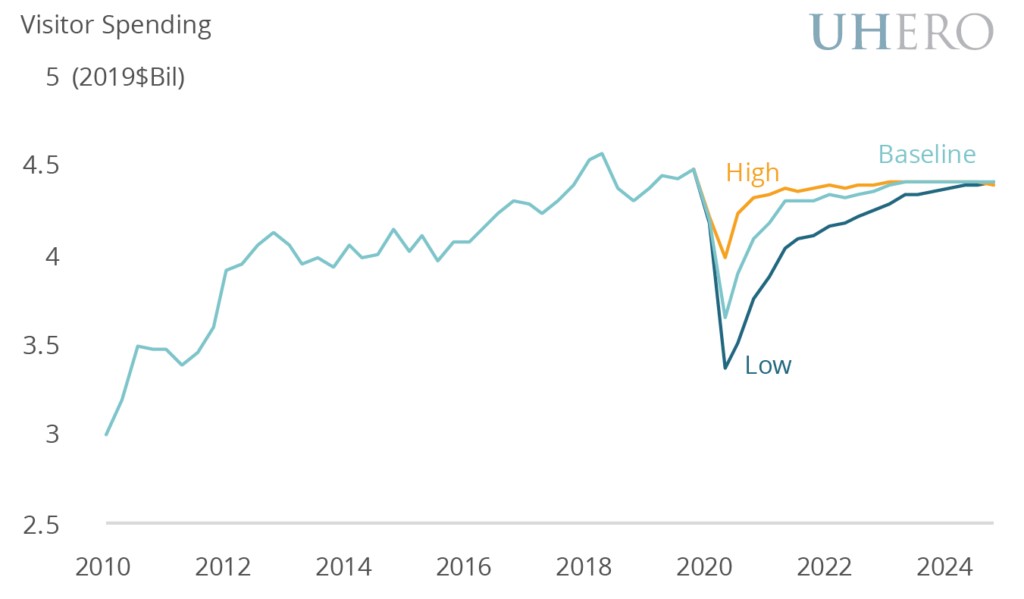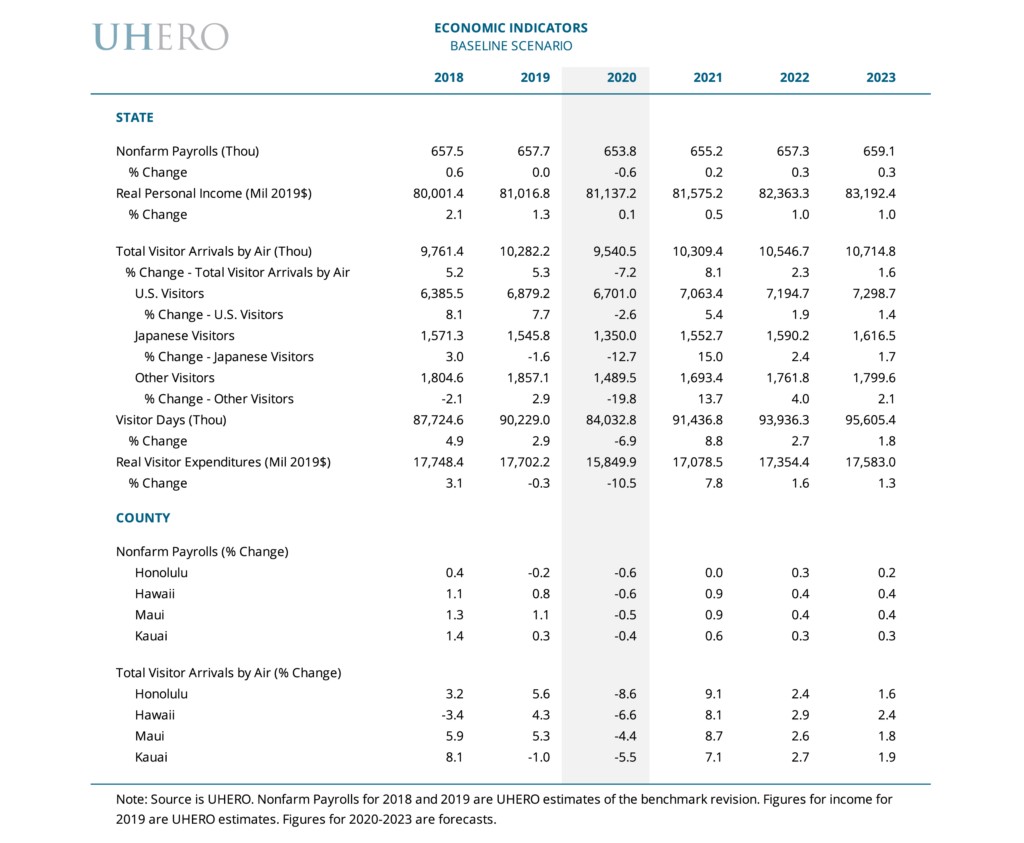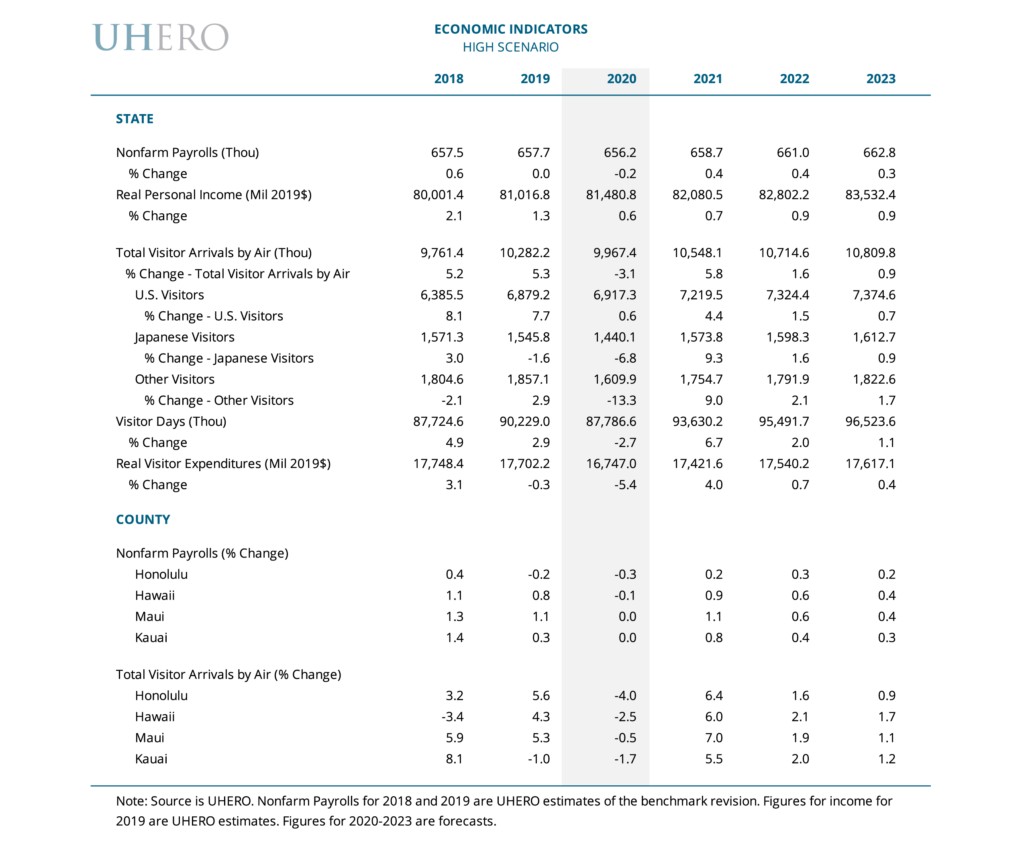Hawaii Tourism Update provides insights into current travel conditions, ensuring a smooth and enjoyable vacation. SIXT.VN offers comprehensive travel assistance, including airport transfers, hotel bookings, and tour packages, making your Hawaiian getaway stress-free. Discover the best time to visit, top attractions, and essential travel tips for an unforgettable experience.
Contents
- 1. What is the Current State of Hawaii Tourism?
- 1.1 What Factors Influence Hawaii Tourism Trends?
- 1.2 What Regions are Driving Hawaii Tourism Growth?
- 2. What are the Key Travel Guidelines for Visiting Hawaii?
- 2.1 Are There Any Covid-19 Related Restrictions in Place?
- 2.2 What Documents Do I Need to Travel to Hawaii?
- 2.3 What are the Current Mask Mandates in Hawaii?
- 3. Which Hawaiian Islands are Open to Tourists?
- 3.1 What are the Unique Attractions on Each Island?
- 3.2 Are There Any Restrictions on Inter-Island Travel?
- 3.3 How Can I Travel Between the Islands?
- 4. What Activities and Attractions are Open in Hawaii?
- 4.1 What Outdoor Activities Can I Enjoy in Hawaii?
- 4.2 Are Cultural Sites and Museums Open?
- 4.3 What Water Sports are Available?
- 5. What are the Best Times to Visit Hawaii?
- 5.1 What is the Weather Like in Hawaii Throughout the Year?
- 5.2 When are the Peak Seasons for Tourism?
- 5.3 Are There Any Special Events or Festivals I Should Consider?
- 6. How Has the Pandemic Affected Hawaii’s Economy?
- 6.1 What is the Current Unemployment Rate in Hawaii?
- 6.2 What Industries Have Been Most Affected?
- 6.3 How is Hawaii Diversifying Its Economy?
- 7. What Sustainable Tourism Practices Can I Follow in Hawaii?
- 7.1 How Can I Reduce My Environmental Impact?
- 7.2 How Can I Support Local Businesses?
- 7.3 What are Some Eco-Friendly Accommodations?
- 8. What Transportation Options are Available in Hawaii?
- 8.1 Should I Rent a Car?
- 8.2 Are Ride-Sharing Services Available?
- 8.3 What is the Public Transportation Like?
- 9. What are Some Budget-Friendly Travel Tips for Hawaii?
- 9.1 How Can I Save Money on Accommodations?
- 9.2 What are Some Free Activities in Hawaii?
- 9.3 How Can I Eat Cheaply?
- 10. What are Some Safety Tips for Traveling in Hawaii?
- 10.1 How Can I Stay Safe in the Ocean?
- 10.2 What Should I Do in Case of an Emergency?
- 10.3 How Can I Protect My Belongings?
- FAQ About Hawaii Tourism Update
- 1. Is Hawaii open to tourism right now?
- 2. Do I need to be vaccinated to travel to Hawaii?
- 3. What documents do I need to travel to Hawaii?
- 4. Are there any mask mandates in Hawaii?
- 5. What is the best time to visit Hawaii?
- 6. How has the pandemic affected Hawaii’s economy?
- 7. What are some sustainable tourism practices I can follow in Hawaii?
- 8. Should I rent a car in Hawaii?
- 9. What are some budget-friendly travel tips for Hawaii?
- 10. How can I stay safe in the ocean in Hawaii?
1. What is the Current State of Hawaii Tourism?
Hawaii tourism is currently experiencing a dynamic recovery, marked by fluctuations in visitor arrivals and spending. The islands have adapted to evolving travel protocols, emphasizing safety and sustainability. According to the Hawaii Tourism Authority (HTA), visitor numbers are steadily increasing, with a focus on attracting responsible travelers who appreciate the unique cultural and natural heritage of the islands. This approach aims to balance economic benefits with the preservation of Hawaii’s environment and local communities. As of recent reports, domestic travel remains a primary driver, with international markets gradually reopening.
1.1 What Factors Influence Hawaii Tourism Trends?
Hawaii tourism trends are influenced by a combination of global and local factors, including economic conditions, travel policies, and environmental concerns. Economic stability in key markets such as the United States, Japan, and Canada plays a crucial role in driving visitor numbers. Travel policies, including vaccination requirements and testing protocols, also significantly impact accessibility and traveler confidence. Additionally, growing awareness of sustainable tourism practices and the desire to protect Hawaii’s natural resources are shaping travel decisions. Local initiatives, such as community-based tourism and cultural preservation programs, are also attracting visitors seeking authentic experiences.
1.2 What Regions are Driving Hawaii Tourism Growth?
Hawaii tourism growth is primarily driven by the U.S. mainland, with strong contributions from California, Texas, and other western states. These regions benefit from direct flights and a strong affinity for Hawaii’s warm climate and diverse attractions. International markets, such as Japan, Canada, and Australia, are gradually recovering, with targeted marketing campaigns aimed at specific traveler segments. Emerging markets, including South Korea and China, also show potential for future growth as travel restrictions ease and economic conditions improve.
2. What are the Key Travel Guidelines for Visiting Hawaii?
Key travel guidelines for visiting Hawaii include pre-travel testing or vaccination requirements, mask mandates in certain settings, and adherence to local health and safety protocols. The Safe Travels program, which was previously in place, has been suspended, but travelers are still encouraged to check for any updates or advisories from the Hawaii Department of Health before their trip. It’s important to respect local customs and traditions, and to be mindful of the environmental impact of your visit.
2.1 Are There Any Covid-19 Related Restrictions in Place?
Although the Safe Travels program has ended, it’s essential to stay informed about any potential COVID-19 related restrictions in Hawaii. Check the Hawaii Department of Health website for the latest updates on mask mandates, gathering sizes, and other health and safety guidelines. While vaccination and testing are no longer mandatory for domestic travelers, individual businesses may still have their own requirements.
2.2 What Documents Do I Need to Travel to Hawaii?
To travel to Hawaii, you’ll typically need a valid government-issued photo ID, such as a driver’s license or passport. While the Safe Travels program is no longer active, it’s always a good idea to carry proof of vaccination or recent negative test results, in case individual businesses require them. If you’re not a U.S. citizen, you’ll need a valid passport and any necessary visas.
2.3 What are the Current Mask Mandates in Hawaii?
As of recent updates, Hawaii no longer has a statewide mask mandate, but individual counties or businesses may still require masks in certain settings. It’s a good idea to carry a mask with you and be prepared to wear it if requested. Respecting local guidelines and being mindful of others’ comfort levels is always appreciated.
3. Which Hawaiian Islands are Open to Tourists?
All of the main Hawaiian Islands are open to tourists, including Oahu, Maui, Kauai, and the Big Island (Hawaii Island). Each island offers a unique blend of natural beauty, cultural attractions, and outdoor activities. Oahu is known for its vibrant city life and iconic beaches, while Maui boasts stunning sunsets and world-class snorkeling. Kauai is famous for its dramatic cliffs and lush rainforests, and the Big Island offers active volcanoes and diverse ecosystems.
3.1 What are the Unique Attractions on Each Island?
Each Hawaiian island offers a unique set of attractions:
- Oahu: Pearl Harbor, Waikiki Beach, Diamond Head, Polynesian Cultural Center
- Maui: Haleakala National Park, Road to Hana, Ka’anapali Beach, snorkeling at Molokini Crater
- Kauai: Na Pali Coast, Waimea Canyon, Poipu Beach, Fern Grotto
- Big Island: Volcanoes National Park, Mauna Kea Observatory, Kona coffee farms, black sand beaches
3.2 Are There Any Restrictions on Inter-Island Travel?
There are currently no restrictions on inter-island travel within Hawaii. However, it’s always a good idea to check for any potential updates or advisories from the Hawaii Department of Health before your trip. Some businesses may have their own requirements, so it’s best to confirm in advance.
3.3 How Can I Travel Between the Islands?
You can travel between the Hawaiian Islands by plane or ferry. Several airlines, including Hawaiian Airlines and Southwest Airlines, offer frequent inter-island flights. The ferry service is primarily available between Maui and Lanai. Flights are generally faster and more convenient, while the ferry offers a scenic alternative.
4. What Activities and Attractions are Open in Hawaii?
Most activities and attractions in Hawaii are open, including beaches, parks, museums, and cultural sites. Tour operators are running excursions such as snorkeling trips, whale watching tours, and helicopter rides. Restaurants and shops are open with varying capacity restrictions. It’s always a good idea to check the operating hours and any specific guidelines before visiting.
4.1 What Outdoor Activities Can I Enjoy in Hawaii?
Hawaii offers a wide range of outdoor activities, including:
- Swimming and Sunbathing: Enjoy the beautiful beaches of Waikiki, Ka’anapali, and Poipu.
- Snorkeling and Scuba Diving: Explore vibrant coral reefs and marine life at Molokini Crater, Hanauma Bay, and Kealakekua Bay.
- Hiking: Discover stunning trails in Haleakala National Park, Waimea Canyon, and Volcanoes National Park.
- Surfing and Paddleboarding: Catch waves at world-famous surf spots like the North Shore of Oahu and Honolua Bay.
- Kayaking and Canoeing: Paddle along the coastlines of Kauai, Maui, and the Big Island.
 Waikiki beach in Honolulu Hawaii alt= "Waikiki Beach in Honolulu, Hawaii, showcasing the vibrant shoreline and Diamond Head in the background, embodying the essence of Hawaiian island tourism and leisure travel."
Waikiki beach in Honolulu Hawaii alt= "Waikiki Beach in Honolulu, Hawaii, showcasing the vibrant shoreline and Diamond Head in the background, embodying the essence of Hawaiian island tourism and leisure travel."
4.2 Are Cultural Sites and Museums Open?
Many cultural sites and museums in Hawaii are open, including Pearl Harbor, the Polynesian Cultural Center, and the Bishop Museum. These attractions offer a glimpse into Hawaii’s rich history and cultural heritage. Check the operating hours and any specific guidelines before visiting.
4.3 What Water Sports are Available?
Hawaii offers a variety of water sports, including:
- Surfing: World-famous surf spots on Oahu’s North Shore and Maui’s Honolua Bay.
- Snorkeling and Scuba Diving: Explore vibrant coral reefs at Molokini Crater and Hanauma Bay.
- Paddleboarding: Calm waters at Waikiki Beach and Ala Moana Beach Park.
- Kayaking: Scenic coastlines of Kauai and the Big Island.
- Jet Skiing: Available at various locations on Oahu and Maui.
- Parasailing: Offered at Waikiki Beach and other popular tourist destinations.
5. What are the Best Times to Visit Hawaii?
The best times to visit Hawaii are during the shoulder seasons, which are April to May and September to October. These months offer pleasant weather, fewer crowds, and lower prices compared to the peak seasons of summer and winter. The weather in Hawaii is generally warm and sunny year-round, with slight variations in temperature and rainfall depending on the island and location.
5.1 What is the Weather Like in Hawaii Throughout the Year?
The weather in Hawaii is tropical, with average daytime temperatures ranging from 75°F to 85°F (24°C to 29°C) year-round. The summer months (May to October) are slightly warmer and drier, while the winter months (November to April) are slightly cooler and wetter. Trade winds keep the islands comfortable, and rainfall is generally localized.
5.2 When are the Peak Seasons for Tourism?
The peak seasons for tourism in Hawaii are summer (June to August) and winter (December to February). These months coincide with school holidays and colder weather in other parts of the world, leading to higher demand and prices. If you’re planning to visit during these times, book your flights and accommodations well in advance.
5.3 Are There Any Special Events or Festivals I Should Consider?
Hawaii hosts a variety of special events and festivals throughout the year, including:
- Merrie Monarch Festival (April): A celebration of Hawaiian culture and hula in Hilo, Big Island.
- King Kamehameha Day (June 11): A statewide holiday honoring King Kamehameha I.
- Aloha Festivals (September): A series of cultural events and parades across the islands.
- Vans Triple Crown of Surfing (November-December): A prestigious surfing competition on Oahu’s North Shore.
6. How Has the Pandemic Affected Hawaii’s Economy?
The pandemic had a significant impact on Hawaii’s economy, particularly the tourism sector. Lockdowns and travel restrictions led to a sharp decline in visitor arrivals, resulting in job losses and business closures. However, the economy has been gradually recovering as travel restrictions have eased and vaccination rates have increased. The state is now focusing on diversifying its economy and promoting sustainable tourism practices.
6.1 What is the Current Unemployment Rate in Hawaii?
The unemployment rate in Hawaii has decreased significantly since the height of the pandemic, but it still remains higher than pre-pandemic levels. The state government is implementing various initiatives to support job creation and economic recovery. According to the Bureau of Labor Statistics, the unemployment rate in Hawaii was [Insert Current Unemployment Rate]% as of [Insert Date].
6.2 What Industries Have Been Most Affected?
The industries most affected by the pandemic in Hawaii include:
- Tourism: Hotels, restaurants, tour operators, and transportation services.
- Retail: Shops and businesses that rely on visitor spending.
- Hospitality: Food service and accommodation providers.
- Entertainment: Cultural attractions and live performance venues.
6.3 How is Hawaii Diversifying Its Economy?
Hawaii is diversifying its economy by investing in sectors such as:
- Renewable Energy: Developing solar, wind, and geothermal power sources.
- Agriculture: Promoting local food production and sustainable farming practices.
- Technology: Supporting innovation and entrepreneurship in the tech industry.
- Healthcare: Expanding access to healthcare services and promoting medical tourism.
- Education: Investing in education and workforce development programs.
7. What Sustainable Tourism Practices Can I Follow in Hawaii?
Sustainable tourism practices in Hawaii include respecting local culture, supporting local businesses, conserving water and energy, reducing waste, and protecting natural resources. Choose eco-friendly accommodations and tour operators, avoid single-use plastics, and be mindful of your impact on the environment. Learn about Hawaiian culture and traditions, and engage with local communities.
7.1 How Can I Reduce My Environmental Impact?
You can reduce your environmental impact in Hawaii by:
- Using Reef-Safe Sunscreen: Protect coral reefs by using sunscreen that doesn’t contain harmful chemicals like oxybenzone and octinoxate.
- Conserving Water: Take shorter showers, turn off the tap while brushing your teeth, and report any leaks.
- Reducing Waste: Bring your own reusable water bottle, shopping bag, and coffee cup.
- Avoiding Single-Use Plastics: Say no to plastic straws, utensils, and takeout containers.
- Respecting Wildlife: Observe marine life from a distance and avoid feeding animals.
 Sunset at kaanapali beach alt="Sunset at Kaanapali Beach in Maui, Hawaii, with vibrant colors reflecting on the ocean and silhouetting palm trees, capturing the serene beauty of a sustainable travel destination."
Sunset at kaanapali beach alt="Sunset at Kaanapali Beach in Maui, Hawaii, with vibrant colors reflecting on the ocean and silhouetting palm trees, capturing the serene beauty of a sustainable travel destination."
7.2 How Can I Support Local Businesses?
You can support local businesses in Hawaii by:
- Shopping at Farmers Markets: Buy fresh produce and locally made products.
- Dining at Local Restaurants: Try authentic Hawaiian cuisine and support family-owned eateries.
- Staying at Locally Owned Hotels: Choose accommodations that are run by local residents.
- Booking Tours with Local Operators: Support tour companies that prioritize sustainable practices and cultural preservation.
- Buying Souvenirs from Local Artisans: Purchase unique gifts and crafts that are made in Hawaii.
7.3 What are Some Eco-Friendly Accommodations?
Some eco-friendly accommodations in Hawaii include:
- Hotel Wailea (Maui): A luxury resort that focuses on sustainability and environmental conservation.
- Travaasa Hana (Maui): An eco-retreat that offers cultural experiences and wellness activities.
- The Lodge at Kukuiula (Kauai): A sustainable resort that supports local agriculture and conservation efforts.
- Volcano Eco Retreat (Big Island): A secluded eco-lodge that is powered by renewable energy.
8. What Transportation Options are Available in Hawaii?
Transportation options in Hawaii include rental cars, ride-sharing services, public buses, and taxis. Rental cars are the most popular option for exploring the islands at your own pace. Ride-sharing services like Uber and Lyft are available in urban areas. Public buses offer an affordable way to get around, but service may be limited in some areas. Taxis are readily available at airports and tourist destinations.
8.1 Should I Rent a Car?
Renting a car is highly recommended for exploring the Hawaiian Islands, especially if you plan to visit multiple attractions or venture off the beaten path. It gives you the flexibility to travel at your own pace and discover hidden gems. However, keep in mind that rental car prices can be high, especially during peak seasons.
8.2 Are Ride-Sharing Services Available?
Ride-sharing services like Uber and Lyft are available in urban areas of Hawaii, such as Honolulu and Waikiki on Oahu, and in some parts of Maui. However, service may be limited in more remote areas. Ride-sharing can be a convenient option for getting around without having to worry about parking.
8.3 What is the Public Transportation Like?
Public transportation in Hawaii consists primarily of bus services. TheBus on Oahu is a comprehensive system that covers most of the island. Maui, Kauai, and the Big Island also have bus services, but they may be less frequent and cover a smaller area. Public transportation can be an affordable option, but it may not be the most convenient for exploring all of the islands’ attractions.
9. What are Some Budget-Friendly Travel Tips for Hawaii?
Budget-friendly travel tips for Hawaii include visiting during the off-season, booking accommodations with kitchenettes, eating at local eateries, taking advantage of free activities, and using public transportation. Look for deals and discounts on flights, hotels, and attractions. Pack light to avoid baggage fees, and bring your own snacks and drinks.
9.1 How Can I Save Money on Accommodations?
You can save money on accommodations in Hawaii by:
- Visiting During the Off-Season: Prices are generally lower during the shoulder seasons (April-May and September-October).
- Booking Accommodations with Kitchenettes: This allows you to cook some of your own meals.
- Staying in Vacation Rentals: Consider renting a condo or apartment instead of a hotel room.
- Looking for Deals and Discounts: Check for special offers and package deals online.
- Considering Hostels or Budget Hotels: These options offer basic accommodations at lower prices.
9.2 What are Some Free Activities in Hawaii?
Hawaii offers a variety of free activities, including:
- Visiting Beaches and Parks: Enjoy swimming, sunbathing, and hiking.
- Attending Free Cultural Events: Check for local festivals and performances.
- Hiking to Waterfalls: Discover scenic trails and natural beauty.
- Watching the Sunset: Enjoy breathtaking views from various vantage points.
- Exploring Local Markets: Browse through crafts and sample local treats.
 Aerial view of green mountain range alt="Aerial view of a lush green mountain range in Hawaii, showcasing the diverse landscape and natural beauty of the islands, perfect for eco-adventures and scenic travel."
Aerial view of green mountain range alt="Aerial view of a lush green mountain range in Hawaii, showcasing the diverse landscape and natural beauty of the islands, perfect for eco-adventures and scenic travel."
9.3 How Can I Eat Cheaply?
You can eat cheaply in Hawaii by:
- Dining at Local Eateries: Try plate lunches, poke bowls, and other local specialties.
- Shopping at Grocery Stores: Buy food and snacks to prepare your own meals.
- Visiting Farmers Markets: Find fresh produce and local products at lower prices.
- Eating at Food Trucks: Sample a variety of cuisines at affordable prices.
- Taking Advantage of Happy Hour Deals: Enjoy discounted drinks and appetizers at local bars and restaurants.
10. What are Some Safety Tips for Traveling in Hawaii?
Safety tips for traveling in Hawaii include being aware of your surroundings, protecting your belongings, following ocean safety guidelines, and respecting local customs. Avoid walking alone at night in poorly lit areas, and keep your valuables out of sight. Swim only in designated areas with lifeguards, and heed warning signs about currents and surf conditions.
10.1 How Can I Stay Safe in the Ocean?
You can stay safe in the ocean in Hawaii by:
- Swimming in Designated Areas: Choose beaches with lifeguards and clear signage.
- Checking Surf Conditions: Be aware of currents, waves, and potential hazards.
- Never Swimming Alone: Always swim with a buddy.
- Heeding Warning Signs: Pay attention to posted warnings about dangerous conditions.
- Using Reef Shoes: Protect your feet from sharp rocks and coral.
10.2 What Should I Do in Case of an Emergency?
In case of an emergency in Hawaii:
- Call 911: For police, fire, or medical emergencies.
- Know Your Location: Be able to provide your exact location to emergency responders.
- Stay Calm: Follow instructions from emergency personnel.
- Have a First-Aid Kit: Carry a basic first-aid kit with essential supplies.
- Know CPR: Be trained in CPR and basic life support.
10.3 How Can I Protect My Belongings?
You can protect your belongings in Hawaii by:
- Keeping Valuables Out of Sight: Store your passport, money, and jewelry in a secure place.
- Locking Your Car Doors: Always lock your car doors and roll up the windows.
- Not Leaving Items Unattended: Keep an eye on your belongings, especially on the beach.
- Using a Hotel Safe: Store valuables in the hotel safe when you’re not using them.
- Being Aware of Your Surroundings: Pay attention to your surroundings and avoid walking alone at night in poorly lit areas.
SIXT.VN can help you navigate these changing times with ease. From airport transfers to hotel bookings, we ensure your trip is seamless and stress-free.
FAQ About Hawaii Tourism Update
1. Is Hawaii open to tourism right now?
Yes, all of the main Hawaiian Islands are open to tourism, with updated health and safety guidelines.
2. Do I need to be vaccinated to travel to Hawaii?
No, vaccination is not currently required for domestic travelers, but individual businesses may have their own requirements.
3. What documents do I need to travel to Hawaii?
You’ll need a valid government-issued photo ID, such as a driver’s license or passport.
4. Are there any mask mandates in Hawaii?
Hawaii no longer has a statewide mask mandate, but individual counties or businesses may still require masks in certain settings.
5. What is the best time to visit Hawaii?
The best times to visit Hawaii are during the shoulder seasons, April to May and September to October.
6. How has the pandemic affected Hawaii’s economy?
The pandemic had a significant impact on Hawaii’s economy, particularly the tourism sector, but the economy has been gradually recovering.
7. What are some sustainable tourism practices I can follow in Hawaii?
Respect local culture, support local businesses, conserve water and energy, and reduce waste.
8. Should I rent a car in Hawaii?
Renting a car is highly recommended for exploring the islands at your own pace.
9. What are some budget-friendly travel tips for Hawaii?
Visit during the off-season, book accommodations with kitchenettes, and eat at local eateries.
10. How can I stay safe in the ocean in Hawaii?
Swim in designated areas, check surf conditions, and never swim alone.
Planning your trip to Hawaii can be overwhelming, but SIXT.VN is here to help. We offer a range of services, including:
- Airport Transfers: Start your trip with a comfortable and convenient airport transfer.
- Address: 260 Cau Giay, Hanoi, Vietnam.
- Hotline/Whatsapp: +84 986 244 358.
- Hotel Bookings: Find the perfect accommodations to suit your budget and preferences.
- Tour Packages: Explore the best of Hawaii with our curated tour packages.
- Website: SIXT.VN
Let SIXT.VN take the stress out of planning your Hawaiian vacation. Contact us today and start your unforgettable journey.
 Diamond Head aerial view alt="Aerial view of Diamond Head in Oahu, Hawaii, showcasing its iconic crater and the surrounding turquoise waters, representing a popular landmark and the allure of Hawaiian island exploration."
Diamond Head aerial view alt="Aerial view of Diamond Head in Oahu, Hawaii, showcasing its iconic crater and the surrounding turquoise waters, representing a popular landmark and the allure of Hawaiian island exploration."
By staying informed and planning ahead, you can make the most of your Hawaiian getaway and create memories that will last a lifetime. Always check official sources for the most up-to-date information, and embrace the aloha spirit with respect and responsibility.





